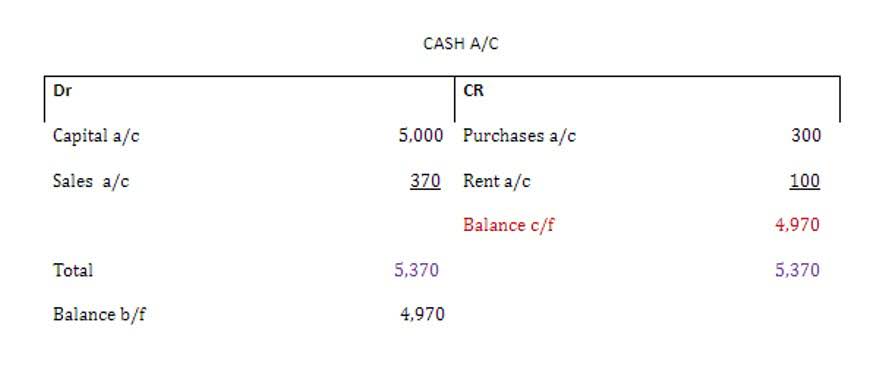
They also play a key role in strategic decision-making, allowing executives to evaluate the collective impact of operational decisions across the group. Consolidation is often seen as a period of indecision, ending when asset prices break the trading pattern due to major news or triggered limit orders. Consolidation is also defined as a set of financial statements that presents a parent and a subsidiary company as one company. Equity consolidation is an accounting method used if the investor does not have full control over the subsidiary.
Why Is a Consolidated Account Statement Valuable?
Additionally, consolidation ensures the uniformity of accounting principles across all operations and facilitates comparison with competitors or industry standards. Different processes, cultures, and goals can clash when two companies merge for consolidation purposes. It can lead to disagreements on how best to manage the new entity and what direction should be taken to maximize profits or develop products. Most of the time, consolidation means getting a lot of data from different places and then checking each piece by hand to ensure it is correct before it can be added to the final report. In addition, different systems must be connected and synchronized for the consolidated report to be accurate and up-to-date. For example, suppose two companies use other accounting software or have different Oil And Gas Accounting ways of keeping track of customer information or stock inventory.
- It makes analytics much more uncomplicated, providing an understanding of what has been gained, lost or maintained throughout any period.
- In other words, it distributes an entity’s assets, liabilities, equities, income, and expenses as per its contribution to the venture.
- This activity is reflected in the consolidated statement of changes in shareholders’ equity.
- Thirdly, it ensures transparency so that there are no missed or forgotten investments by the investor for his financial planning.
- Once we have identified that significant influence exists, we do not consolidate line by line like we do for a subsidiary.
- This could be because it shadows the inter-branch transactions and shows only the consolidated financial statement.
What is the repo rate set by the Monetary Policy Committee (MPC)?
- Therefore, while consolidated financial statements provide a comprehensive view, individual entities still have their own respective financial reporting requirements.
- Consolidated statements require considerable effort to construct, since they must exclude the impact of any transactions between the entities being reported on.
- The development of software designed explicitly for consolidations is a testament to how important this concept has become in the financial sphere.
- (1) The equity dividend proposed by Shed Ltd. has not been brought into credit by Flower Ltd. in the draft accounts.
- It provides a detailed view of your investments, including transaction history, portfolio valuation, and other essential information, making it easier for investors to track and manage their mutual fund holdings.
- The streamlined nature of the CAS simplifies tracking and analysis, presenting all relevant financial information in one place.
This process includes eliminating inter-company transactions among subsidiaries to avoid double counting and presenting a unified balance sheet, income statement, and cash flow statement. For instance, if Subsidiary A sells products to Subsidiary B, these sales are not included in the consolidated revenue because they do not represent external sales to third parties. Consolidated financial statements are used when a parent company controls more than 50% of a subsidiary. Companies with over 20% control can use consolidated accounting, while those with less than 20% must use equity method accounting. Non-consolidated financial statements are the separated financial statement of each individual company. It is the same to consolidate financial statements, consist of the Income statement, Statement of Financial Position, Statement assets = liabilities + equity of Cash Flow ad Statement of Change in Equity.

Understanding Consolidated Financial Statements

It allows stakeholders to understand the overall financial health and performance of a group of companies under common control. Whether you’re a CMA student, a financial analyst, or a business owner, understanding how to consolidate financial statements is crucial for transparency and regulatory compliance. This comprehensive article from cmaknowledge.in dives into everything you need to know about financial consolidation.

Is CAS only for mutual funds, or does it include other investments?

The proportionate consolidation method requires all subsidiaries’ accounts to be restated according to the parent company’s ownership percentage. Consolidating does not mean merging entities is a common misconception in accounting. Combining two or more companies involves the combination of ownership, assets and liabilities into one single entity. The parent company will also be able to use the consolidated information to make informed decisions about long-term investments or other strategic measures. It’s important to note that while consolidation can provide critical insights, one must understand which accounts are used to obtain accurate results. Consolidation in accounting is the process of combining multiple financial statements into one.

COMPANY
This means that the consolidated financial statements show $15 million of sales and a $10 million cost of goods sold. For this method of consolidation accounting, consolidated account meaning the parent company owns more than 50% of the subsidiary. Therefore, the reporting and accounting of the subsidiary are under the complete control of the parent company. Both GAAP and IFRS have distinct guidelines for entities reporting consolidated financial statements with subsidiaries.




